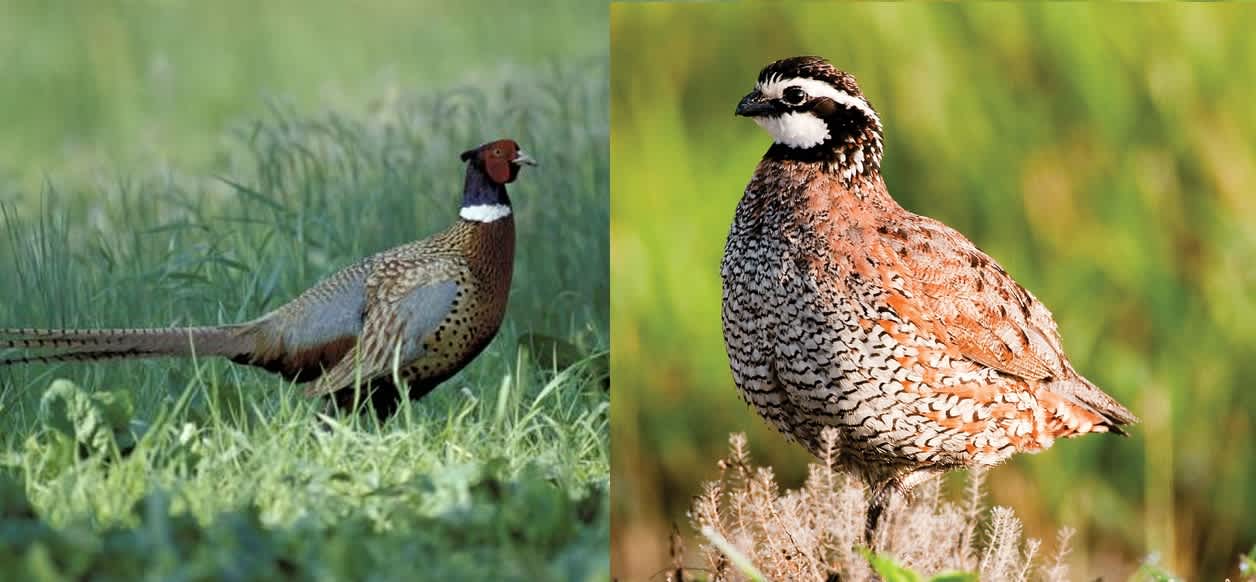Correcting 7 Common Myths about Quail and Pheasant Hunting
Daniel Xu 02.03.15

There are number of misconceptions regarding quail and pheasant hunting. Like the items described in our deer hunting myths list, most of these upland hunting falsehoods are harmless. However, wildlife experts stress that some of these so-called facts can detract from the crisis facing upland birds today: the problem of adequate habitat. Biologists say that habitat is the number-one factor when it comes to the prosperity of these birds, and the success of the hunters who chase them.
Here are seven of the most prevalent—and strangely widespread—myths about quail and pheasant.
1. Predators are responsible for lower bird populations
This is one myth that wildlife agencies have been trying to set the record straight on for years, but many hunters still think that predators are the major problem for upland bird populations in North America. According to the experts, it’s all about habitat. Predators do play a large role in reducing bird numbers, but that is usually for stocked birds, not wild populations. In contrast, hunters will often find that great habitat for quail and pheasant also translates to more predators, but not fewer birds. Of course, that does not mean that predators do not cause any problems, especially in smaller pieces of land where the birds find themselves penned in by coyotes and foxes. Biologists say that larger tracts of land will allow birds to flourish, even with predators nearby.
2. Hunting quail prevents inbreeding
We are not sure where this old, but patently false idea came from. According to wildlife agencies, there is no truth to the notion that hunting quail helps prevent inbreeding, and it was probably first formulated as an excuse for some hunter to go on an urbanized landowner’s property. The truth is, quail coveys are far from being family groups. Instead, numerous studies have show that coveys are generally just gatherings of random quail at any specific time. This mixing allows the species to naturally prevent inbreeding on its own.
3. You can increase pheasant populations by lowering bag limits
Research has shown that pheasant populations have remained largely unchanged by bag limits or shooting hours. Despite some hunters (or animal rights groups) thinking otherwise, experts say that this is because only a relatively small number of roosters is needed for breeding.
“Hens are protected from harvest and roosters are polygamous, meaning that one rooster mates with multiple hens,” states the Missouri Department of Conservation. “Rooster-only seasons have very little impact on population size.”
The males that are removed during hunting season can be seen as a sort of a “surplus.” Pheasant populations are instead much more dependent on habitat conditions and winter severity.
4. Turkeys eat quail
For some reason, there is a widespread belief that turkeys will kill and eat quail, yet few studies in the past 60 years have ever found evidence of turkeys eating quail. If you’ve witnessed it while hunting, biologists would sure love to see a video of it. In fact, biologists say that turkeys are indifferent towards the smaller birds, and will generally not harass them. The foundation of this strange rumor may lie with the fact that turkey habitat—more tree cover and fewer shrubs—is not ideal for quail and as a result, hunters see quail populations falter.
5. A good hatch of birds in the summer equals better hunting
This is not always true, especially with quail coveys. Birds do not always stay in the same area come hunting season, and factors like drought and lack of food will also hit the population hard. A shortage of protective cover and edible grass seeds means that quail populations can drop dramatically. Unlike other birds, quail do not flee to other areas with more preferable conditions, and will instead die.
6. Stocking pheasants restores bird populations
In a perfect world, stocking birds will allow them to establish a population in the wild. Unfortunately wildlife experts say this is often not the case. Stocked birds usually are not successful in founding self-sustaining populations. The major problem, as mentioned above, is the presence of predators. Unlike wild birds, stocked pheasants have little experience with predators and often make for an easy meal—accounting for as much as 90 percent of stocked pheasant deaths not from hunting.
7. All bobwhite quail hens are monogamous
For many years, researchers supposed that quail hens were monogamous, yet the introduction of radio telemetry studies in the 1970s showed researchers that this was not the case. Instead, researchers found that some hens would mate with one rooster, lay a nest full of eggs, and leave them to the care of the male while the bird went off to mate with another rooster. This can happen several times before the hen decides to stay and incubate her most recent batch of eggs. Thankfully, roosters are able to incubate eggs on their own and it is suspected that a quarter of all all quail chicks are actually raised by males.

